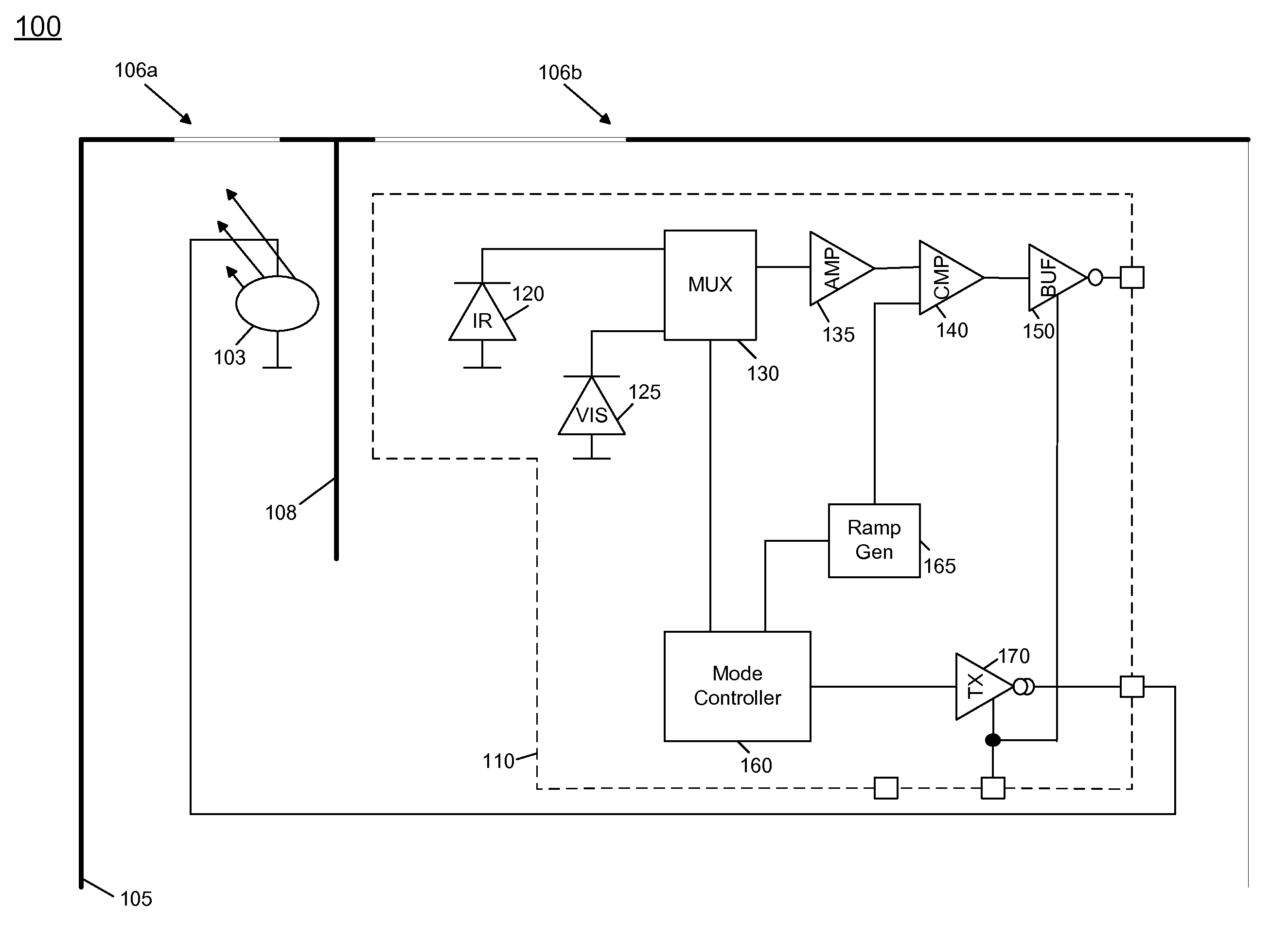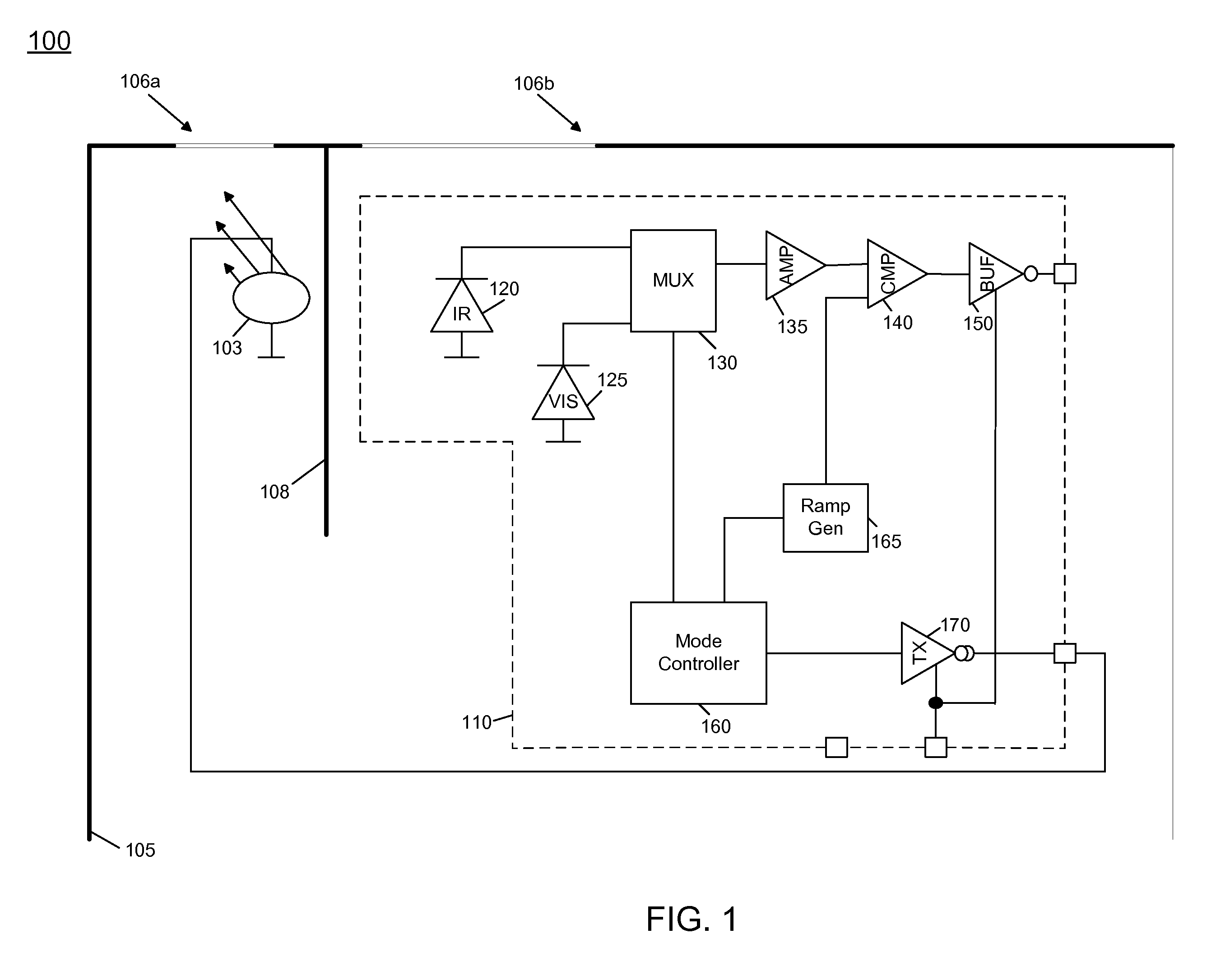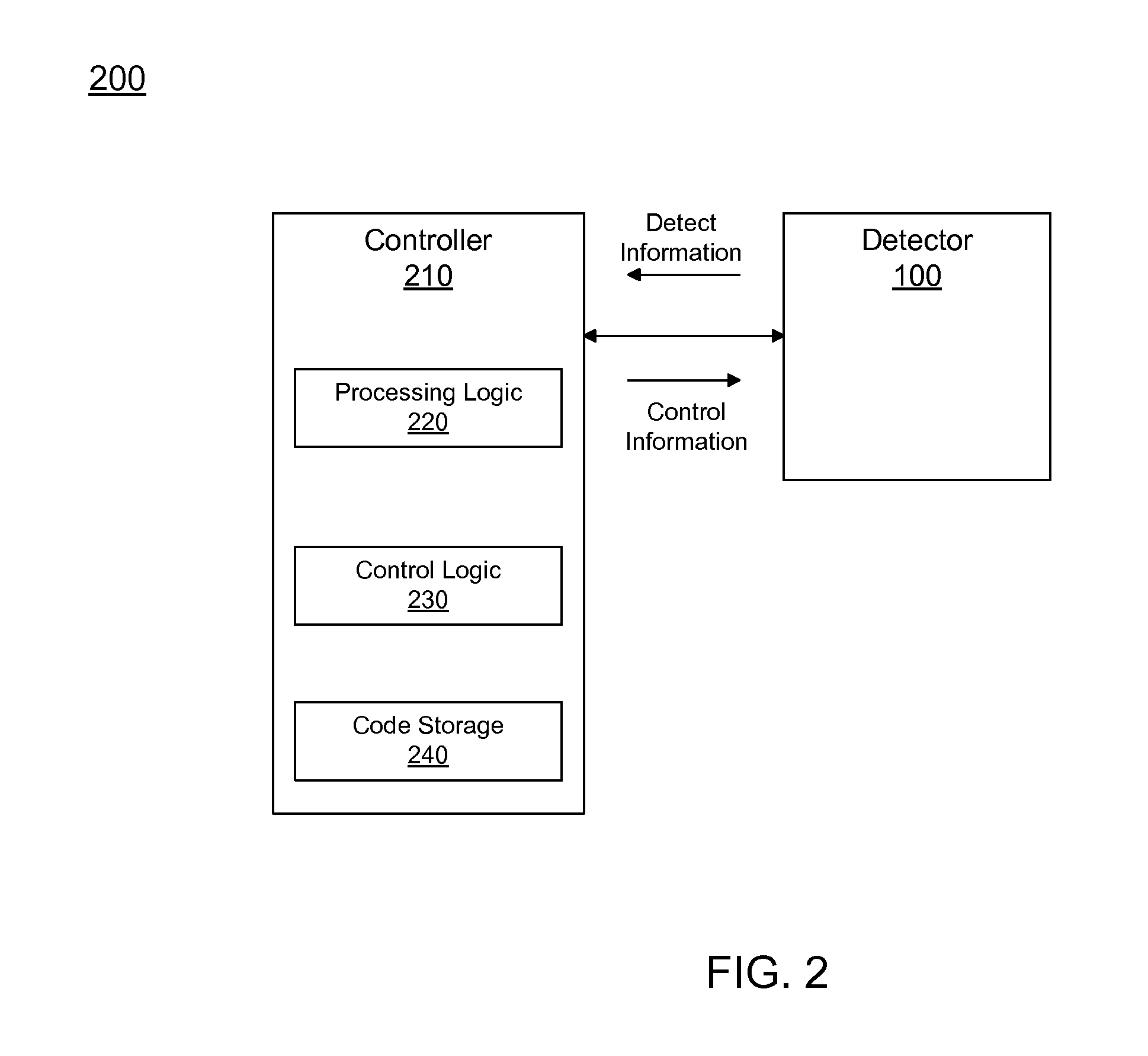Identifying ambient light type and illuminance compensation using a plurality of photodetectors
a technology of ambient light type and compensation, applied in the direction of optical radiation measurement, instruments, spectrometry/spectrophotometry/monochromators, etc., can solve the problems of difficulty in obtaining detectors, display power consumption,
- Summary
- Abstract
- Description
- Claims
- Application Information
AI Technical Summary
Benefits of technology
Problems solved by technology
Method used
Image
Examples
Embodiment Construction
[0011]In various embodiments, a mechanism for determining a human-perceived brightness may be realized without using photodetectors (such as photodiodes) that are matched to a human eye response. Accordingly, using an embodiment of the present invention, inexpensive photodiodes may be used in an integrated circuit (IC) to provide improved performance with fewer design constraints. In addition, embodiments may further estimate an ambient light type present in a location of the IC.
[0012]In various embodiments, an IC may include multiple photodetectors, e.g., two photodiodes, neither of which are matched to a human eye photopic response curve. Such diodes may be configured to operate at different wavelengths. For example, in one embodiment, a first photodiode may be configured to have a response that peaks within a visible light spectrum and a second photodiode may be configured to have a response that peaks within an infrared light spectrum. Information from these two diodes may be us...
PUM
 Login to View More
Login to View More Abstract
Description
Claims
Application Information
 Login to View More
Login to View More - R&D
- Intellectual Property
- Life Sciences
- Materials
- Tech Scout
- Unparalleled Data Quality
- Higher Quality Content
- 60% Fewer Hallucinations
Browse by: Latest US Patents, China's latest patents, Technical Efficacy Thesaurus, Application Domain, Technology Topic, Popular Technical Reports.
© 2025 PatSnap. All rights reserved.Legal|Privacy policy|Modern Slavery Act Transparency Statement|Sitemap|About US| Contact US: help@patsnap.com



